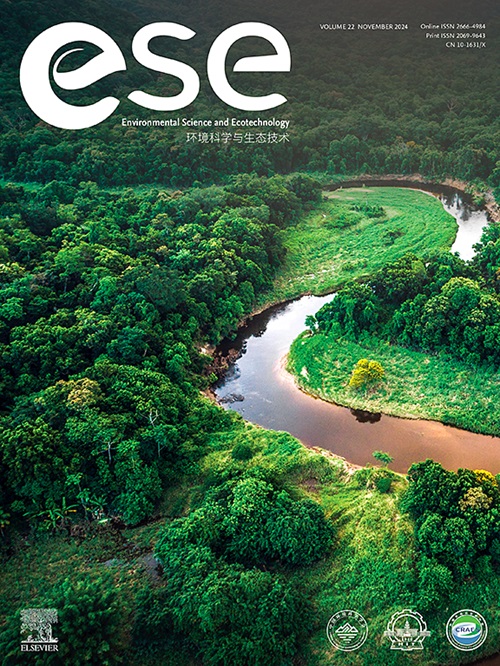Single-cell protein production from CO2 and electricity with a recirculating anaerobic-aerobic bioprocess
IF 14.3
1区 环境科学与生态学
Q1 ENVIRONMENTAL SCIENCES
引用次数: 0
Abstract
Microbial electrosynthesis (MES) represents a promising approach for converting CO2 into organic chemicals. However, its industrial application is hindered by low-value products, such as acetate and methane, and insufficient productivity. To address these limitations, coupling acetate production via MES with microbial upgrading to higher-value compounds offers a viable solution. Here we show an integrated reactor that recirculates a cell-free medium between an MES reactor hosting anaerobic homoacetogens (Acetobacterium) and a continuously stirred tank bioreactor hosting aerobic acetate-utilizing bacteria (Alcaligenes) for efficient single-cell protein (SCP) production from CO₂ and electricity. The reactor achieved a maximum cell dry weight (CDW) of 17.4 g L−1, with an average production rate of 1.5 g L−1 d−1. The protein content of the biomass reached 74% of the dry weight. Moreover, the integrated design significantly reduced wastewater generation, mitigated product inhibition, and enhanced SCP production. These results demonstrate the potential of this integrated reactor for the efficient and sustainable production of high-value bioproducts from CO2 and electricity using acetate as a key intermediate.

利用循环厌氧-好氧生物过程从二氧化碳和电力中生产单细胞蛋白质。
微生物电合成(MES)是将二氧化碳转化为有机化学品的一种很有前途的方法。然而,它的工业应用受到低价值产品的阻碍,如醋酸盐和甲烷,以及生产力不足。为了解决这些限制,通过MES将醋酸酯生产与微生物升级相结合,以获得更高价值的化合物,这是一个可行的解决方案。在这里,我们展示了一个集成反应器,该反应器在MES反应器和连续搅拌槽生物反应器之间循环无细胞培养基,MES反应器容纳厌氧同质醋酸菌(Acetobacterium)和连续搅拌槽生物反应器容纳好氧醋酸菌(Alcaligenes),用于从二氧化碳和电力中高效生产单细胞蛋白质(SCP)。反应器的最大细胞干重(CDW)为17.4 g L-1,平均产率为1.5 g L-1 d-1。生物量蛋白质含量达到干重的74%。此外,集成设计显著减少了废水的产生,减轻了产物抑制,并提高了SCP的生产。这些结果表明,该集成反应器具有利用醋酸盐作为关键中间体,从二氧化碳和电力中高效、可持续地生产高价值生物产品的潜力。
本文章由计算机程序翻译,如有差异,请以英文原文为准。
求助全文
约1分钟内获得全文
求助全文
来源期刊

Environmental Science and Ecotechnology
Multiple-
CiteScore
20.40
自引率
6.30%
发文量
11
审稿时长
18 days
期刊介绍:
Environmental Science & Ecotechnology (ESE) is an international, open-access journal publishing original research in environmental science, engineering, ecotechnology, and related fields. Authors publishing in ESE can immediately, permanently, and freely share their work. They have license options and retain copyright. Published by Elsevier, ESE is co-organized by the Chinese Society for Environmental Sciences, Harbin Institute of Technology, and the Chinese Research Academy of Environmental Sciences, under the supervision of the China Association for Science and Technology.
 求助内容:
求助内容: 应助结果提醒方式:
应助结果提醒方式:


